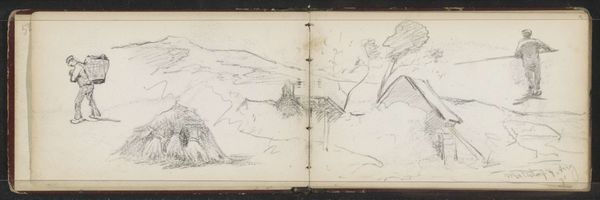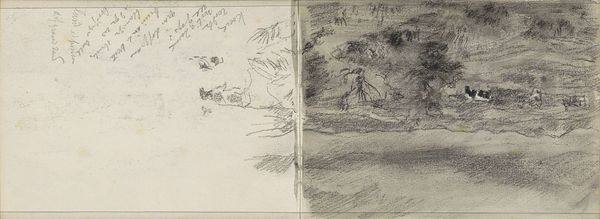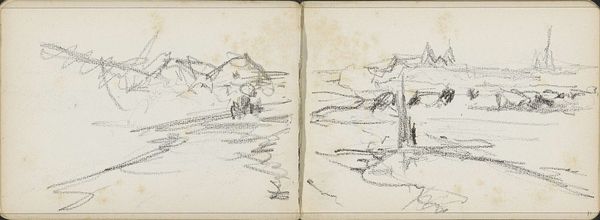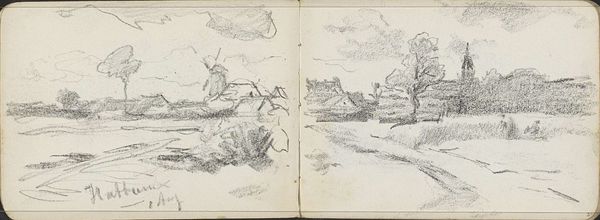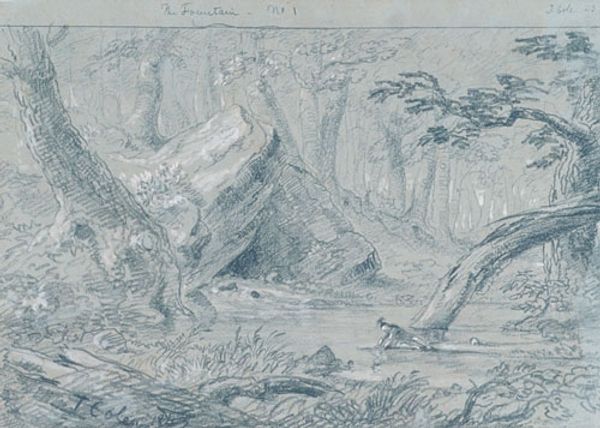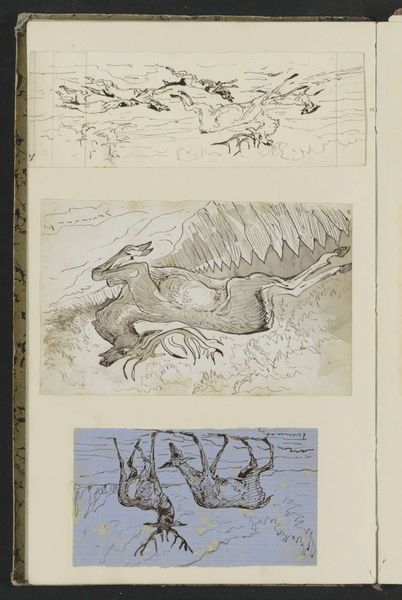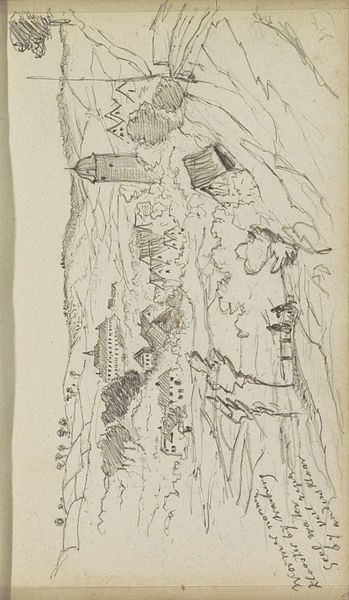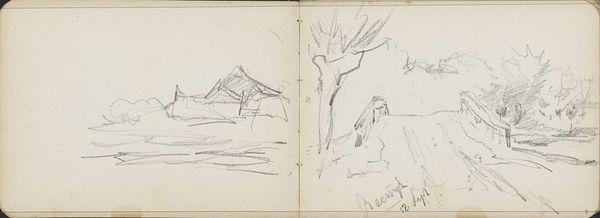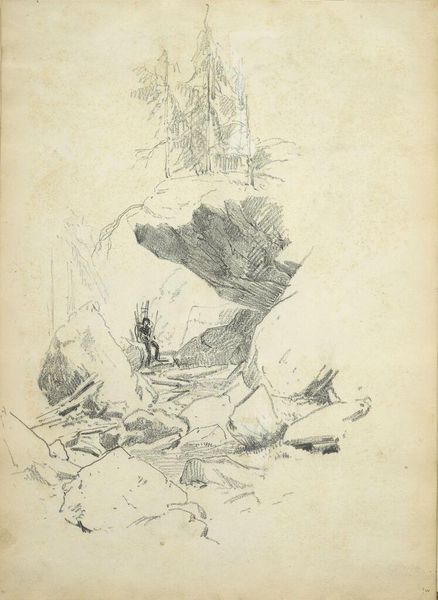
Gespleten boomstammen in het park van Metternich en jagers te Schonau Possibly 1869
0:00
0:00
Copyright: Rijks Museum: Open Domain
Curator: Here we have Johannes Tavenraat’s “Gespleten boomstammen in het park van Metternich en jagers te Schonau,” a drawing possibly from 1869 currently held at the Rijksmuseum. Editor: The composition is really striking, dividing the page into these two distinct, almost dreamlike spaces. The split trunks on one side feel incredibly solid, whereas the hunters on the other, barely-there. It gives me an eerie sort of feeling. Curator: Note the use of ink and paper – everyday materials used for what would become a poignant sketch of class, labor, and power dynamics. Look at how the meticulous details in rendering the wood grain contrast sharply with the almost careless strokes outlining the hunters in the field. Editor: Exactly! What's interesting is the setting itself. A park is ostensibly public space, right? But here, the very landscape seems divided, both literally and figuratively, into spheres of working and… well, looking. Curator: I agree. There's an overt depiction of raw material juxtaposed with figures likely enjoying a recreational activity predicated on the extraction of these very resources, whether they are directly profiting off it or not. Editor: The date, possibly 1869, places this piece squarely within a period of rapid industrial expansion, deeply impacting European landscape. How would this image function as a comment, perhaps a critique, on human intervention? Are these "gentlemen" active agents in landscape transformation? Curator: A pointed query, and perhaps a lament. We see how Tavenraat’s process is intimately connected with this era’s visual language and ideological contradictions: romantic ideals facing off with the pragmatic drive of expanding industry and associated resource usage. Editor: Ultimately, that raw contrast is what captivates me. Between what we take and how we appreciate it, and the inherent unease lurking in that difference. Curator: Absolutely. Tavenraat delivers a document filled with complexities which challenge the perception of simple genre paintings of the time, turning this innocuous landscape study into a telling statement about exploitation.
Comments
No comments
Be the first to comment and join the conversation on the ultimate creative platform.
